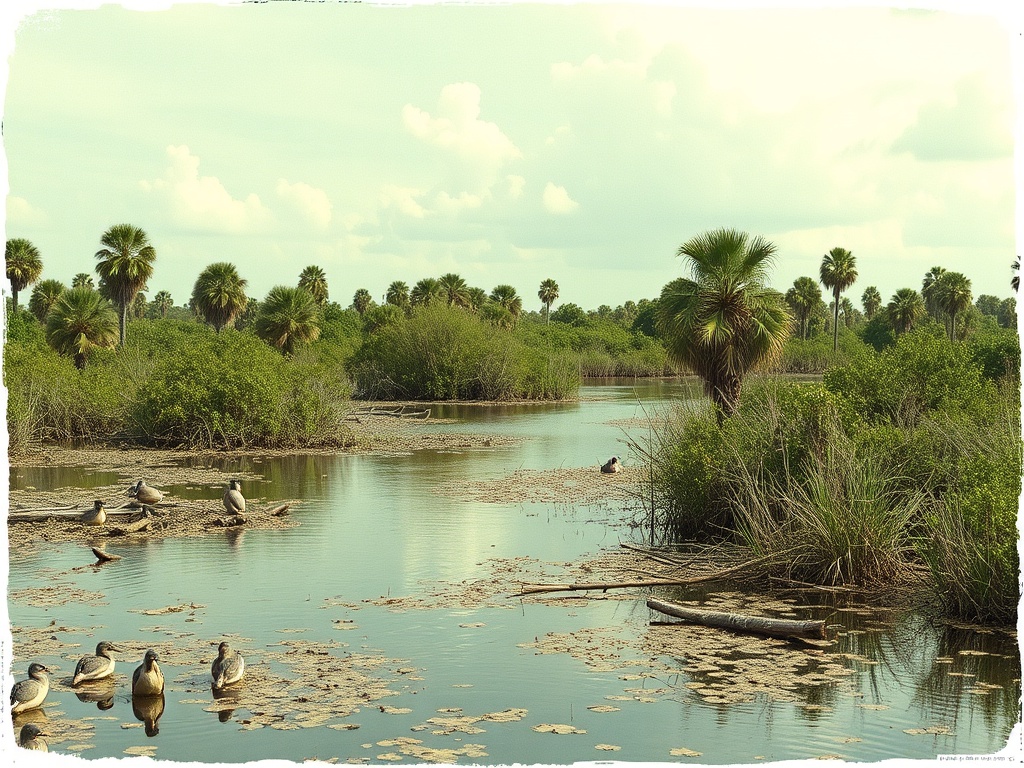A living mosaic of sawgrass marshes, mangrove estuaries, and pine flatwoods, the Everglades is one of the planet’s most unusual and vital ecosystems. Often called the “River of Grass,” it functions as a slow-moving, shallow freshwater river flowing from inland freshwater sources toward coastal estuaries, supporting a staggering variety of plants and animals and providing essential services that protect communities and fisheries.
What makes the Everglades special
The landscape is defined by water: seasonal sheet flow that feeds marshes, supports peat soils, and replenishes coastal wetlands. This dynamic hydrology creates distinct habitats in close proximity—sugar-white sawgrass prairies, hammock islands, and fringe mangroves—each harboring specialized species.
Iconic fauna include wading birds like herons and egrets, apex predators such as the American alligator, and rare residents like the American crocodile and the Florida panther.

The Everglades also buffer storm surge, filter pollutants, and recharge aquifers that supply drinking water.
Conservation and restoration
Decades of engineering projects and development altered historic water flow, reduced freshwater delivery to southern wetlands, and increased nutrient pollution. Restoration efforts focus on reconnecting the landscape, improving water quality, and rebuilding habitats. Strategies include modifying water-control structures, creating stormwater treatment areas to remove excess nutrients, and restoring more natural sheet flow where possible. Tackling invasive species—Burmese pythons, melaleuca trees, and other nonnative plants and animals—remains a high priority because they displace native wildlife and disrupt food webs.
Climate risks
Sea level rise and changing rainfall patterns present growing challenges.
Saltwater intrusion can convert freshwater marshes to saline habitats, stressing species adapted to fresh water and altering carbon storage in peat soils. Warmer temperatures and altered hydrology can also shift plant communities and increase the frequency of harmful algal blooms. Adaptive management that prioritizes resilient freshwater delivery and coastal protections will be essential for sustaining the Everglades’ functions.
Experience the Everglades responsibly
Visiting the Everglades is an unforgettable way to connect with nature, but choose low-impact options to protect fragile habitats.
Paddle routes and guided canoe trips let you move quietly through sawgrass marshes and mangrove creeks, offering close wildlife encounters without disturbing nesting birds. Boardwalks and short trails—such as popular, accessible loops—provide excellent birdwatching and photography opportunities. Airboat tours remain a popular attraction in private wetlands, but be mindful of operators’ environmental practices and regulations that protect park areas. Pack insect repellent, sun protection, plenty of water, and binoculars for the best experience.
How to help
Support local and regional conservation organizations working on habitat protection, water-quality projects, and invasive species control.
Simple actions—reducing fertilizer use, planting native species in home landscapes, and practicing responsible boating—limit runoff and habitat disturbance. Staying informed about restoration projects and public comment opportunities helps shape policies that safeguard freshwater flow and coastal resilience.
The Everglades is a living classroom for hydrology, ecology, and conservation. Protecting its slow-moving river of grass sustains biodiversity, supports fisheries, and protects communities—small actions and smart policies together make a profound difference for this fragile, powerful landscape.